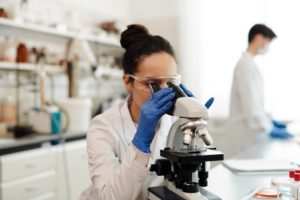Types of DNA Evidence Used in Criminal Court Cases
A person’s genotype is a string of letters that creates a code that is unique to each human on earth. There are a trillion trillion possible genotypes, and there are currently fewer than 8 billion people on Earth, so it is highly unlikely that people could have the same genotype, even if they’re identical twins.
In a criminal court case, prosecutors use different types of DNA evidence that rule out the possibility anyone else could have committed the crime. If the prosecution is likely to use DNA evidence against you, it’s important to work with a Morristown criminal defense lawyer to protect your rights.
History of DNA Evidence
The use of deoxyribose nucleic acid (DNA) in criminal court cases started in 1985 in Great Britain. Scientist Alec Jeffreys used DNA testing to solve a homicide case that occurred in England. The DNA was also used to pair the suspect with other unsolved crimes in the country. Two years later, a Florida man was convicted of sexual assault based on DNA evidence collected by detectives. DNA evidence preserved from older crimes has also been used to exonerate people who were wrongly convicted based on other, less scientific evidence.
How DNA Evidence Is Collected
Just about any type of biological sample can be used to yield DNA evidence. Saliva, blood, mucus, skin cells, hair follicles, semen and vaginal secretions all yield enough DNA for laboratories to determine the genotype. Once the sample is collected and preserved, the laboratory uses a technique called polymerase chain reaction. Also called PCR, it allows a tiny sample of DNA to be processed. The PCR method amplifies the DNA into millions of copies within a matter of hours. The process is more than 99% accurate. There is less than a one in 1 trillion chance that two people will match.

Errors are typically caused by contamination or human error in the lab. Each state has its own laboratory licensing requirements and rules for the submission of DNA evidence in court.
Types of DNA
Each person carries two types of DNA. The first is nuclear DNA. In the nucleus of nearly all cells, there are 46 chromosomes. These 46 chromosomes are paired into 22 autosomal chromosomes and one pair of sex chromosomes. Each individual gets one chromosome from their mother and one from their father.
The other type of DNA evidence a court may admit is mitochondrial DNA. Each individual inherits their mother’s mitochondrial DNA.
How DNA Evidence Is Used to Match People to Crimes
When DNA evidence is found at the scene of a crime, it is sent to a genetic testing lab. The FBI and nearly all police departments participate in databases. Sexual offender registries also include DNA databases. When a new sample of DNA is processed, the results are compared to the samples from known individuals in databases. This helps identify who the genotype belongs to. Some labs have long backlogs of samples, and the analysis may take months or even years.
Uses of DNA Evidence in Court Cases
Prosecutors use DNA matching in criminal investigations and trials. When there are no witnesses or the witnesses are unreliable, the court typically turns to any available DNA evidence. This evidence can also be used to prove that a person didn’t commit a crime. To date, more than 250 people have been exonerated through DNA evidence after their wrongful convictions.
DNA evidence is also frequently used to prove paternity in child support cases. Courts sometimes use DNA to match potential heirs in estate settlement cases and to identify the remains of accident and crime victims as well.
If you’re facing criminal charges and the evidence includes DNA, working with a Morristown criminal defense lawyer helps you understand your rights, how the court process works and what to expect from the prosecution and judge. To schedule a consultation with the Morristown law office of Gregg Wisotsky, call 973-898-0161. You may also fill out our online contact form, and an associate will reach out to you to schedule a consultation as soon as possible.













Leave a Reply